The biggest failure for the Husaberg came on my driveway. The kickstand popped up, the bike fell over and oil started leaking out after the shifter punched a hole in the sidecover. And I wasn't even riding it yet! A week later we had the new cover and got the Husaberg on the fast track to 200-plus hours. To finish up (or off) the Husaberg 650 we had to put another 60 hours of running time on it. So we scheduled a few all-day rides. That means 24 hours plus! One was up in the mountains just after the snow melted off the trails. We assembled a solid group of guys and went riding, riding and riding. An oil change and a check on the valves later, we went to the desert and ran the bike again, just faster. After these two stints of nearly 35 hours each, the bike was still ticking like a clock. While we waited for the right time to tear it all apart the bike went out for a few final rides before meeting its fate with a filleting fit for a fish fry, or a photo studio.During our time with the Berg we learned that keeping good oil in the bike and the air filter clean go a long way. We also learned that a bike with this much power has an appetite for chains, sprockets and tires. The MSR Hard Parts chain and the Vortex sprockets handled the task. We had our best luck with Michelin's M12 and S12 and the Pirelli MX Extras, especially considering we were getting 35-plus hours per set and over 1000 miles on the Pirellis in the desert.The teardown was revealing, too. First, as easy as the Berg is to work on in the regular maintenance department, it is a little tricky to remove the carb from the confines of the frame. Reinstallation of the engine in the frame will be tricky, as there is a proper sequence that must be followed. Then there is the motor. Interesting and unique to say the least, the centercases hold the cylinder sleeve, there isn't a traditional separate cylinder. Mostly straightforward until splitting the cases, the shifting mechanism and the distinctive crank-centered, counter rotating balance shaft as well as some of the starter gears are not normal. But the shop manual will get you where you need to be.Upon splitting the cases we discovered another interesting thing. The counterbalancer-side crank bearing was not the stock roller type but a ball type. We suspected it had been replaced earlier in the bike's life when we had felt the crank "knocking." When we sent it to the shop we were told it was only a loose output shaft nut. They did not have the bike long enough to split the cases. Evidently this was an improvement found by Husaberg's supermoto racers and it clearly works. It must have been done before we received the test bike back in 2005. And our consistently leaky impeller shaft seal problem was due to the worn surface on the balance shaft that doubles as the water pump shaft. It was wasted and needed replacement. The piston, rings and crank all looked brand-new. Same for the exhaust valves, but the intake valves were heavily cupped, surprising since they only needed a few slight adjustments over the course of the test. They will be replaced. Other than a gasket kit and a new piston kit, we're bolting it back together and calling it good. When we do we are using the new balance shaft and a seal kit we got from a dealer in Australia (www.orangektm.com) for about $80 including shipping-that evidently is the cure for the leaky seals. In fact, the user group at www.husaberg.org is a pretty solid source for information on anything Husaberg.
Jimmy Lewis cranks the big 650 one last time.
To sum up the bike, once we got a good jetting setting in the machine we never touched the carb (OBDVR needle, 5th clip position, 160 main jet, 38 pilot jet, Boyesen QuickShot, Scotts fuel screw). Then we just rode it. Over time it seemed to vibrate less (our biggest complaint), and when we got the suspension tuned by ESP, the ride was better than ever. We punished it with long-running stints and it never even came close to letting us down and always fired right up. Well, as long as we kept the battery terminals tight. The radiator fan was a welcome addition in the tight going. The Berg got pretty good fuel economy when riders took care with the throttle and is still one of the quickest, torque-spewing machines we've ever tested. There was not a hill the 650 failed to climb, let alone accelerate at any time during the climb if there was traction. The six-speed gearbox gave the FE650e a tight trail riding capability unimaginable for a bike of this displacement; it rode as lightly and flicky as a 450 most of the time. Then it has the legs to run at 100 mph out in the open. For sure, we never expected the Husaberg to run for so long and be so trouble-free. The small issues we had with it were not too bothersome and well worth the uniqueness and powerful punch the bike possesses.Running Tally
Hours on Bike: 210
**Modifications: $1394.95 (none since last updated)
**Maintenance and Repairs: $1572.06 (not including tires)
**Outer clutch cover: $43.29
**O-ring: $12.34
**Balance shaft: $160.95
**Intake valves: (2) $33.71
**Gasket kit: $208.24
**Piston kit: $271.79
**Orange KTM seal kit: $80
3 oil changes and 1 filter
**Oil filter: $8.38
Motorex Cross Power 4T 20W-50: $13.95 per liter
Pirelli MX Extra tires, 120/100-18 rear: $77.95; 80/100-21 front: $71.95
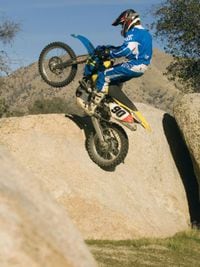
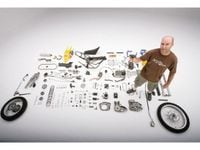
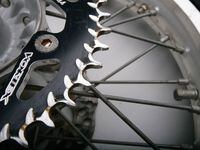
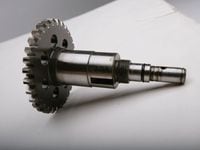

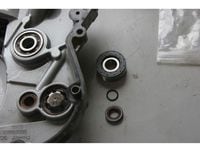
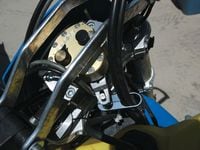
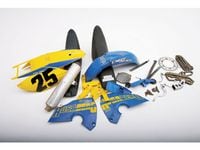
/cloudfront-us-east-1.images.arcpublishing.com/octane/OFSXJJ5PZFEZ5D5ZPMCFVHJUMA.jpg)
/cloudfront-us-east-1.images.arcpublishing.com/octane/N2JLNLG44VEKBMEPORRDTMX5A4.jpg)
/cloudfront-us-east-1.images.arcpublishing.com/octane/EOERU244ONEWVKQ7C24OHMRVWY.jpg)
/cloudfront-us-east-1.images.arcpublishing.com/octane/JF4T3ULTGNHTVEKSTNKLJ2IGKY.jpg)
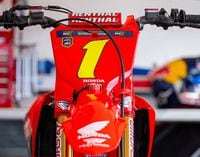
/cloudfront-us-east-1.images.arcpublishing.com/octane/FAOZEEEXFVA3ZK2PYMY3DHI2EQ.jpg)
/cloudfront-us-east-1.images.arcpublishing.com/octane/WCAUGYKA5FDZTB64FM36LJFMMM.jpg)
/cloudfront-us-east-1.images.arcpublishing.com/octane/EIDVOIN5IJDMRIVS2VNTOOBVSA.jpg)
/cloudfront-us-east-1.images.arcpublishing.com/octane/5BSWCTPONFB3DJFRPJ34STZMR4.jpg)
/cloudfront-us-east-1.images.arcpublishing.com/octane/KSERUHQUTNHLBCWKXS2R3TYZHI.jpg)
/cloudfront-us-east-1.images.arcpublishing.com/octane/GGOH2AQRSVHY5C5JLNEVYLB5SU.jpg)
/cloudfront-us-east-1.images.arcpublishing.com/octane/TJJEHV3ATZFFXHUYZABHXKE2DI.jpg)
/cloudfront-us-east-1.images.arcpublishing.com/octane/M7L5LNQ5JZENHNBTCHEIKZKD24.jpg)
/cloudfront-us-east-1.images.arcpublishing.com/octane/WIC4RXQ36BAXNIW6U4UJ3XDLKI.jpg)
/cloudfront-us-east-1.images.arcpublishing.com/octane/G64JLSXQBJFMVPTETPM4H353EU.jpg)
/cloudfront-us-east-1.images.arcpublishing.com/octane/ZBMLCCOSNJBIVAEC2OU6YSONKY.jpg)
/cloudfront-us-east-1.images.arcpublishing.com/octane/U7PDRXGEI5DCFJGSVGNLAHGIMA.jpg)
/cloudfront-us-east-1.images.arcpublishing.com/octane/S553MV5QAJFOHGOKYO7TJ6NGYA.jpg)
/cloudfront-us-east-1.images.arcpublishing.com/octane/62WLA7IMLVF2LIPTA4DGILHZIM.jpg)
/cloudfront-us-east-1.images.arcpublishing.com/octane/BW6RDLNDENAVFHMPINCIIY3XCI.jpg)
/cloudfront-us-east-1.images.arcpublishing.com/octane/FEROGJTVONBBZKEUH46OD6R2VY.jpg)
/cloudfront-us-east-1.images.arcpublishing.com/octane/IFBSQJ2HCFG5JKH4GM3NB5LC3M.jpg)
/cloudfront-us-east-1.images.arcpublishing.com/octane/GPNWD73XDJDG7LMXDVFDZ7CL2I.jpg)
/cloudfront-us-east-1.images.arcpublishing.com/octane/BDI3FSQXIFAYHNC62TCPI3DV7E.jpg)